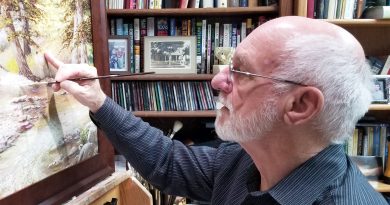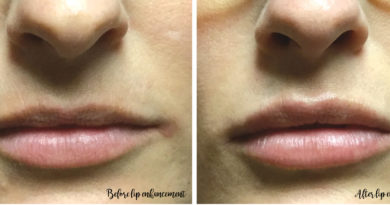Studio takes natural approach to fitness
Story by EMILY HILLEY-SIERZCHULA
Photos by JENNA SUMMA
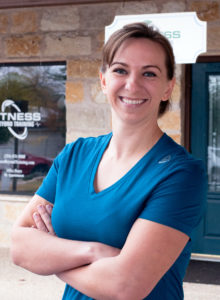
Nestled into one of the shopping malls on Salado’s Main Street is Fitness Beyond Training, a nontraditional fitness studio where the instructors are exercise physiologists trained to take a holistic approach to health and wellness.
Upon entering, clients smell sandalwood incense while Native American-inspired pipe music plays in the yoga room.
It is not a large space, with just a handful of rooms, but it’s enough to provide one-on-one or small group exercises.
“People come here wanting help with aches and pains, and it’s also for athletes who want to increase performance,” said Angelie Juaneza, exercise physiologist. She has had clients as young as 8 all the way to 72.
The studio offers an array of services: personal training, nutritional counseling, metabolic testing, hypnotherapy and acupuncture.
Acupuncture compels a “calm feeling” in people, Juaneza said.
The studio boasts a certified Yoga Sport Coach who blends science with yoga.
Next door to the yoga room is the training room, where the free weights, bands, bar bells and exercise balls are meant to engage multiple muscle groups, Juaneza explained. Physiologists at Fitness Beyond Training give each person specific exercises based on their body, goals and the nature of the movement dysfunction to be corrected.
Aches and pains often are the result of movement dysfunctions or poor body alignment and tend to get worse with age, said Mira Rasmussen, owner and exercise physiologist.
“We try to find the source of the movement dysfunction and work from there,” Rasmussen said. “The body will not go back into alignment on its own.”
She said older people should not accept pain as a natural consequence of age. “It seems that way because the body has been out of alignment for a longer period of time,” Rasmussen said. “It’s fun because I’ve had clients who had accepted, ‘Well, this is my life now,’ to getting back on track and doing what they want to do.”
Her business is meant to bridge the gap between the services of a typical personal trainer, who is generally qualified to help a healthy person get in shape, and the super-focused training of a physical therapist who is helping someone overcome a specific injury.
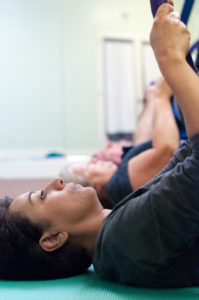
Rasmussen became an exercise physiologist because of an enduring fascination with the body. “It’s complex and intriguing,” she said. “The body as a system really arouses passion in me because I get to help someone go from being in pain to achieving fitness goals they didn’t know was possible.”
Joe Vaughn of Salado, 62, a client since the business opened in March, has seen the results of strength training and yoga sessions each week. “I had lost some strength, but now I have it back and I’m stronger than I’ve been in 30 years,” he said. “They took the time to find out my history and were willing to go at my pace.”
Going to sessions is a stress reliever, also.
“They have a sense of humor. It’s a positive vibe, low-key and it’s not a competition with a bunch of people working out at once. I’ve never enjoyed a gym mentality so the smallness was attractive to me; it allows me to focus.”
Exercise doesn’t have to feel like a hard, dreaded slog up an impossibly high mountain.
“Only athletes really need to push their bodies to its limits,” she said. “High intensity all the time is not good because it often pushes past the body’s ability to stabilize and heal, leading to injuries and torn muscles.”
To make it worse, an injury can be an excuse not to exercise again.
Bring in the science
“We want to get the true science out there, the good information, not the fads,” Rasmussen said about her profession as an exercise physiologist.
Exercise physiology is an emerging field, becoming more common just over the past decade, she said. It differs from personal training as a profession because exercise physiologists have bachelor’s or master’s degrees and often additional certifications.
“We put the science behind the workout” through heart rate monitoring and metabolic testing, Juaneza said.
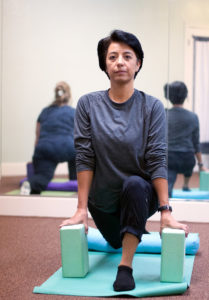
Two kinds of metabolic testing are offered, each of which gives insight into what exercises might be best for a person: Resting Metabolic Rate and active. RMR measures how many calories your body burns in a day, which “forms the foundation for a good nutrition plan.” Measuring a person’s metabolic rate while exercising (VO2) helps physiologists structure cardio exercise because it measures how efficiently the body is using oxygen.
“Different workout intensities produce different results,” Rasmussen explained. “High intensity workouts are good for the heart but not for losing fat.”
The body needs fuel, so Fitness Beyond Training works closely with people to find a healthful way of eating.
“We don’t advocate ‘diets,’ but we try to find strategies that will last for that particular person,” Rasmussen said. It’s more than just pondering the protein, carbohydrate and fat content of food. “We look at the micro level of nutrition, figuring out the value of the vitamins, minerals and antioxidants that regenerate the body.”
Part of regeneration is reducing inflammation in the body, “which affects metabolism by inhibiting the body’s ability to work at its best,” Rasmussen said. “Just about any pre-packaged food is likely to cause inflammation in the body.”
Vaughn has changed his eating habits under the guidance of a nutritional counselor.
“I’ve never been overweight but there’s always been that 10-15 pounds extra. It’s hard to keep that extra weight off with a patty melt a week,” Vaughn said, laughing. Now he’s eating fewer carbohydrates and more protein and greens.
Being a Fitness Beyond Training client is not meant to be permanent; rather, just for as long as it takes to get back on track.
“Clients leave more knowledgeable about their own bodies, nutrition and how to work out in the most efficient way for them,” Rasmussen said. “We love working with people and helping them feel good physically again.”


